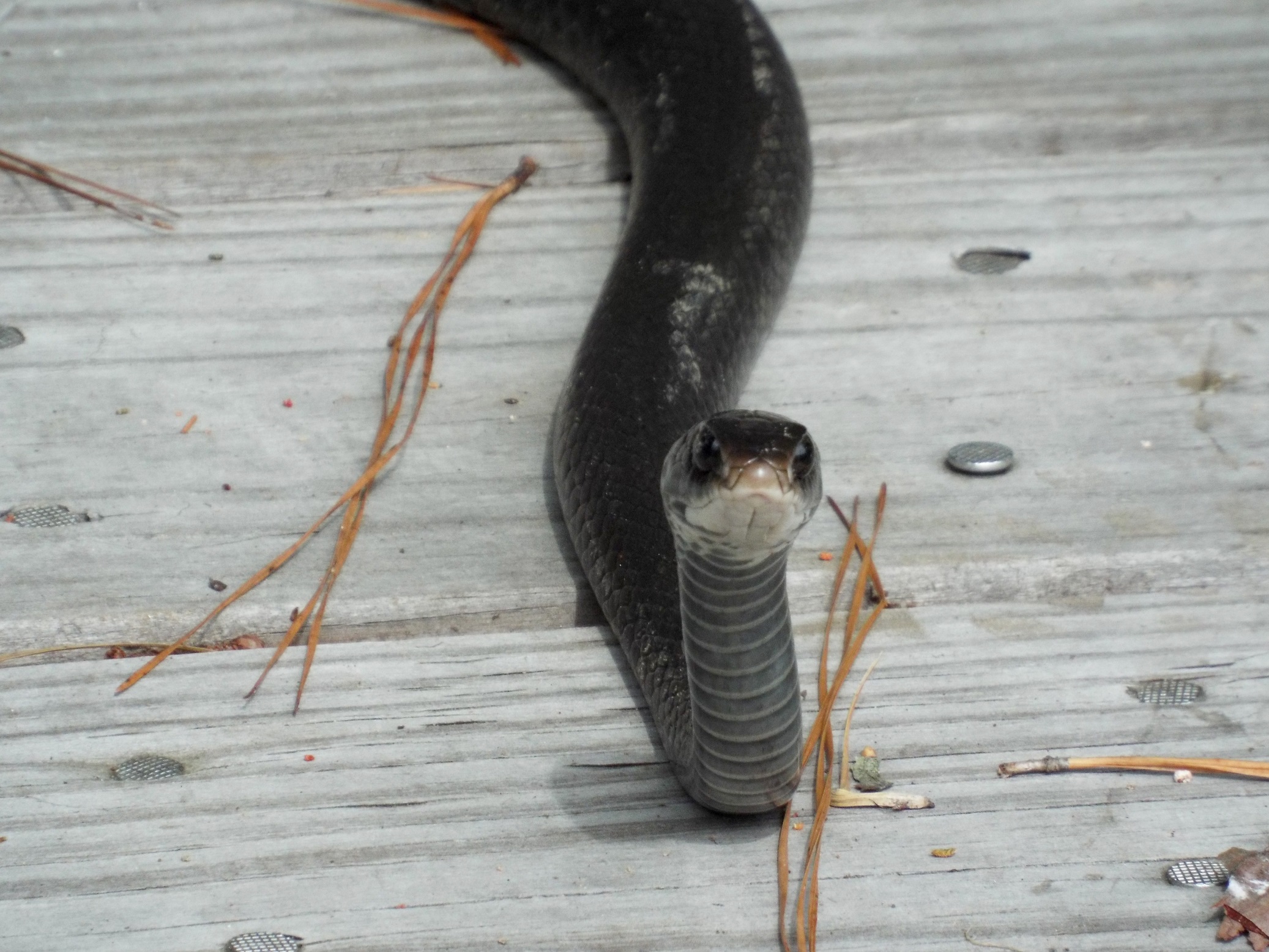
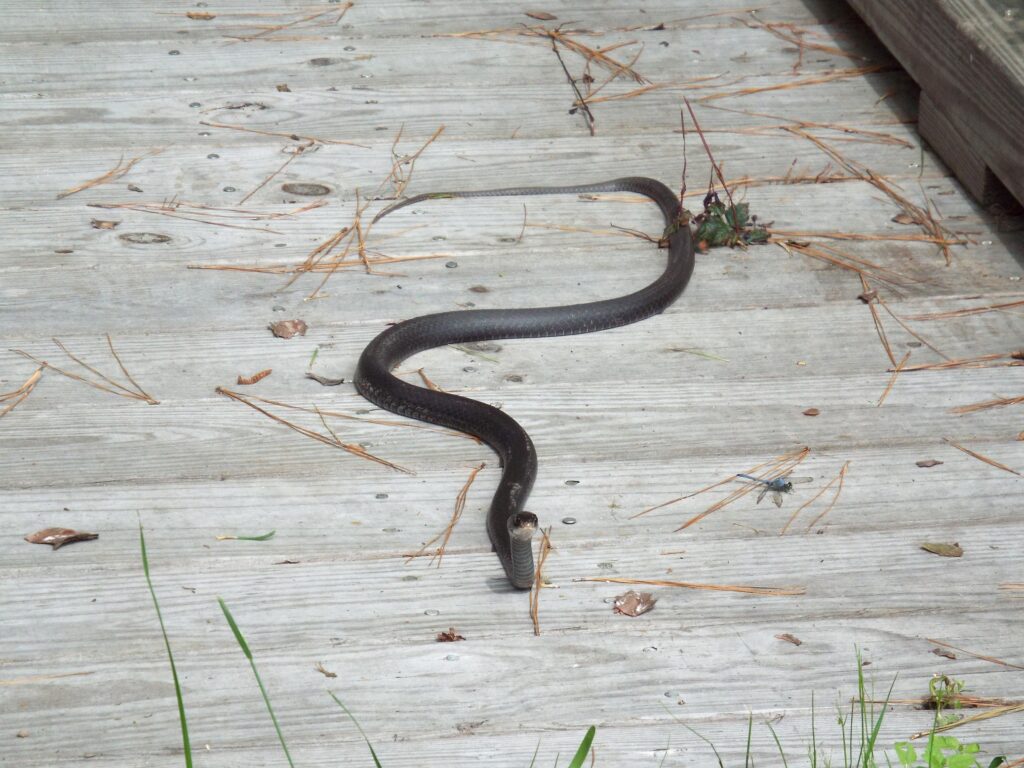
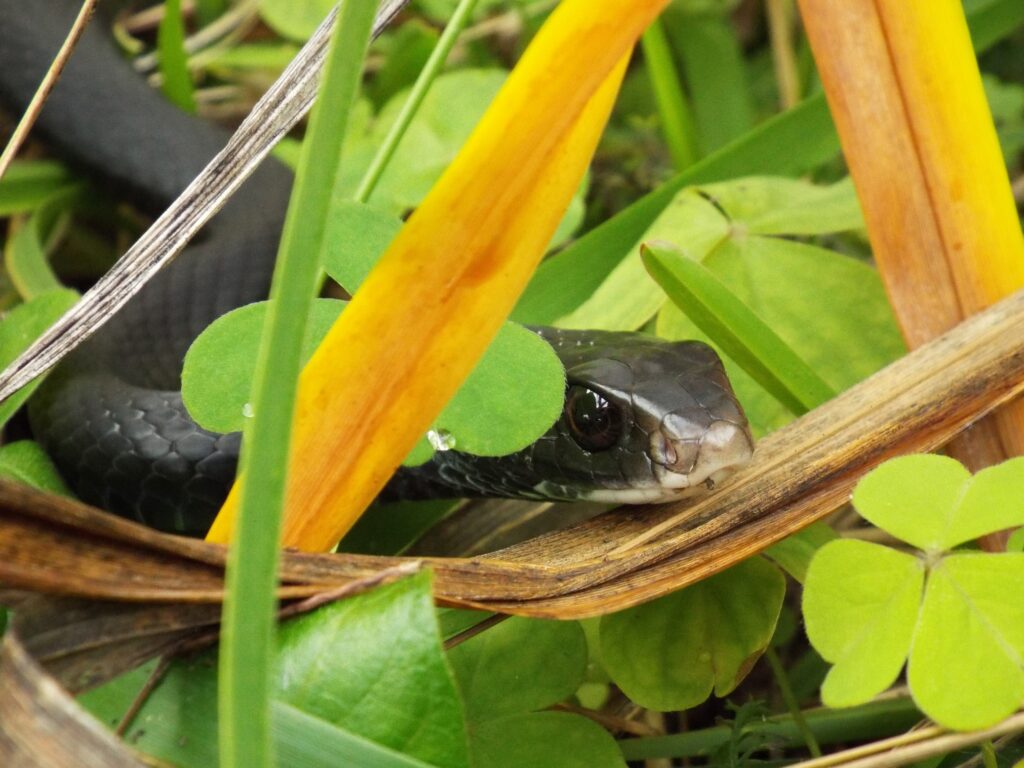
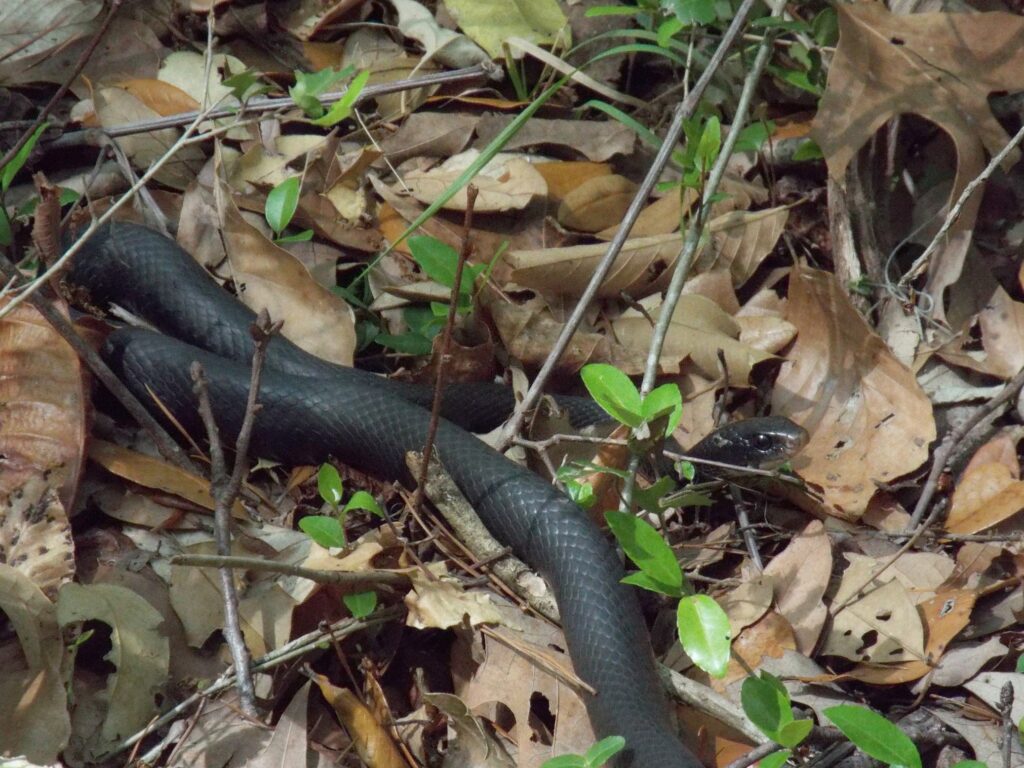
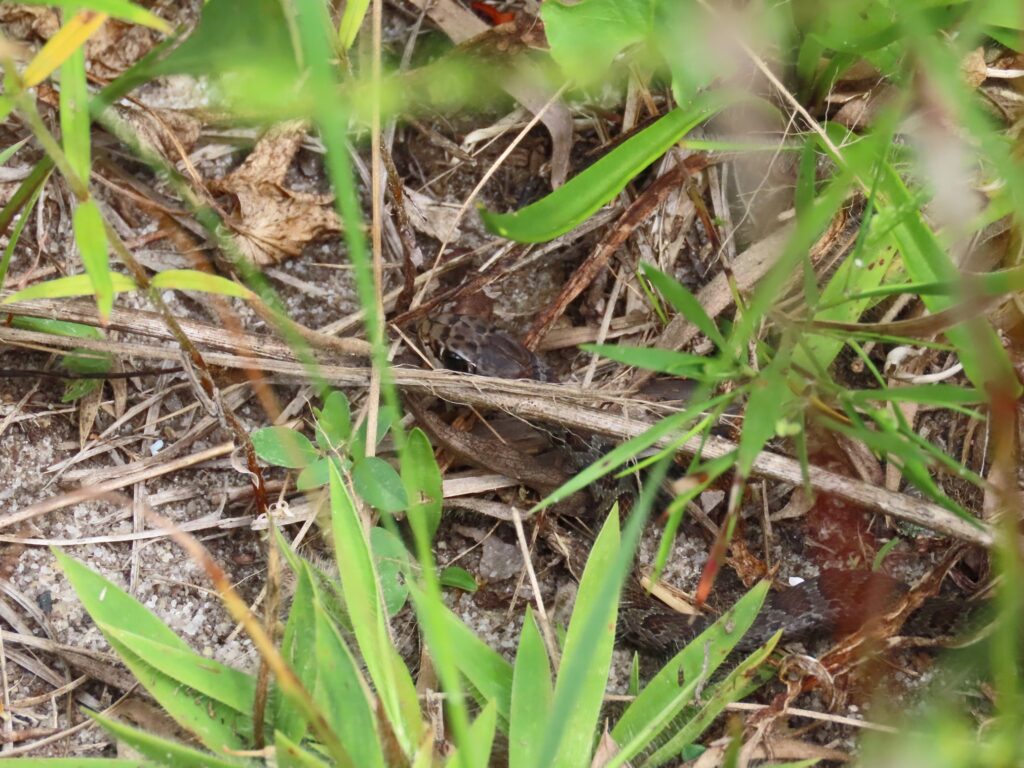
This week for Flora and Fauna Friday it’s our most common slithering friend, the Southern Black Racer (Coluber constrictor priapus).
The Southern Black Racer is the subspecies of Black Racer found here in the Lowcountry. The Black Racer is a spindly snake with a long thin body, small head, large eyes, and semi-gloss black coloration, often with a white chin as its sole accent. Juveniles are phosphate-gray with ruddy-brown blocky blotches down their back. Adults can reach five feet in length but are usually three to four feet long. Black Racers can be found practically anywhere in the state, especially along woodland edges. They’re probably our most commonly seen species of snake on Edisto Island and usually one of the first to stir in spring. Unlike many other snakes, Black Racers are diurnal and hunt during the day. They hunt a wide range of prey including mice, skinks, birds, frogs, and insects using their exceptional speed for a snake. They will also raid low-lying bird nests but are not as adept at climbing as the Rat Snake. Black Racers hunt by sight and don’t constrict their prey, so they generally only eat small critters that don’t put up much of a fight. Another interesting trait of Black Racers is their preference for fleeing over camouflage. Most snakes stay stock still when approached or will coil up in defense. Black Racers, however, turn tail and scurry away as fast as possible. You’ll generally spot one coiled up on a log sunbathing or surveying the forest floor with its head held half a foot above the ground. If you get too close or move abruptly, they’re gone in a flash. Yet, when cornered, Racers are feisty and will not hesitate to strike and bite anything that gets too close. Despite this, they’re nonvenomous and totally harmless to people and all but the smallest of poultry.